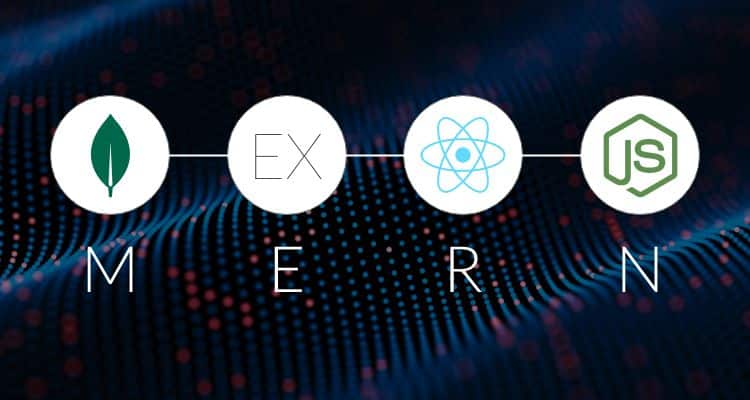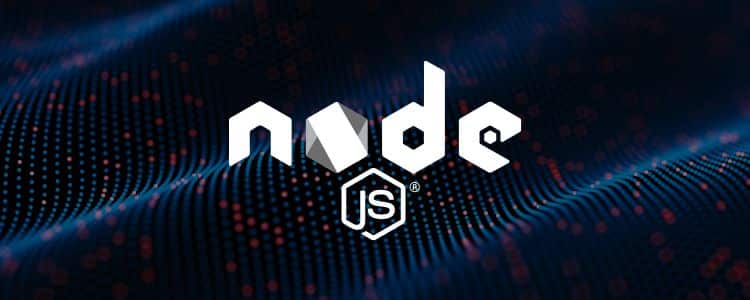What is MERN Stack?

What is MERN Stack
Web applications are developed using a variety of technologies. The phrase “technology stack” is often used in modern software development to refer to the combination of programming languages, frameworks, and tools used in the software development process.
In the past, web and mobile applications were developed using Javascript, HTML, or CSS. Today, newer databases, development frameworks, and runtime environments have become so popular that virtually every software developer uses them. These modern technology stacks offer numerous benefits like faster development time and improved performance. Some of these popular technology stacks include; MEAN, LAMP, MEVN, and MERN stack. Checkout what is a LAMP Stack?
MERN Stack Explained
MERN stack is an open-source web development framework used to create web and hybrid mobile apps. MERN stack is a Javascript stack designed for a more straightforward development process and faster deployment of full-stack web applications.
MERN is an abbreviation for the four technologies that make up this stick, i.e., MongoDB, Express.js, React.js, and Node.js. The MERN stack offers an end-to-end framework to developers, with all the components playing a significant role in developing web apps.
MERN stack is a variation of MEAN stack development. However, the Angular component in the MEAN stack is replaced by React.js in MERN.
The MERN Stack Components
As previously mentioned, the MERN stack consists of four components
MongoDB

MongoDB is a cross-platform source, No-SQL, document-oriented database that allows backend applications to store data. MongoDB stores data as JSON-like documents with schemas.
MongoDB does not require a fixed schema or proper relational tables to store necessary data, unlike SQL or relational databases. MongoDB instead stores the data in a different format from relational tables consisting of rows and columns.
The data is saved in the BSON format, which stands for Binary JavaScript Object Notation; its binary structure encodes the length and kind of information, parsing it considerably faster. Because of its efficient storage and indexing algorithms are more quickly than RDBMS (Relational Database Management System).
One of the many advantages of MongoDB is that it employs JavaScript as a coding language. There are no relationships or table formations in MongoDB, as in RDBMS (Relational Database Management System), where tables have a specific relationship between them.
The MongoDB database scales by adding more servers and increasing productivity with its flexible document model.
Express.JS

Express.js is a server-side framework for JavaScript that runs in js. It’s one of the best JavaScript frameworks for backend development, giving developers the tools they need to build and maintain reliable servers.
Express.js is a tool for rapidly and easily creating and designing web and mobile applications. It’s utilized to offer server-side logic for mobile and web applications, and it’s widely used as a result.
It makes it considerably easier for developers to create robust APIs and web servers and also makes it easier to structure your application’s functionality with routing and middleware on powerful web servers. It also enhances Node.js HTTP objects with valuable features.
Express allows programmers to use Javascript in both the front end and backend and is used to create dependable online applications that are quick and easy to maintain.
React.JS

React, as it is popularly called, is an open-source frontend JavaScript library for creating web apps. It’s used to build UI components that generate better user interfaces, particularly for a single-page web application.
React isn’t a JavaScript framework; it’s a JavaScript library that was created by Facebook to solve difficulties that other libraries couldn’t solve when developing web and mobile applications.
For mobile and online applications, React is also used to take control of the view layer. It enables programmers to design massive web apps that can easily change page data without reloading the page.
React is a user interface creation tool that provides scalability and is quick and easy to use. It’s also used in conjunction with a number of other JavaScript libraries and frameworks.
Many open-source technologies, such as Angular js, are being utilized to make frontend web and mobile application development easier. Most developers, however, use React because it is incredibly quick and has more advantages than other frontend frameworks.
NodeJS

Node.js is a cross-platform runtime environment for executing JavaScript code outside of a browser. It is an open-source server environment. It is neither a programming language nor a framework, but a Javascript runtime environment for executing code server-side
It’s commonly used to create and develop various backend services, such as web applications and mobile apps. It is a free ASCII text file platform that anybody can use and runs on a variety of operating systems, including Windows, Mac, Linux, Unix, and others. Check out our article on how to Install Node.js and NPM on Windows.
Node.js provides users with incredibly ascendable and speedy services. It is effortless to get started with and can even be used for agile development and prototyping.
Architectural Framework for MERN Stack Development
MERN stack has three basic tiers or layers:
The frontend or web layer
The middle or server-layer
The backend or database layer
The four MERN stack components interact within these three layers.
Frontend or Web Layer
React.js is primarily responsible for the frontend or top layer of the MERN stack. React is well-known for its ability to create dynamic client-side apps in HTML and allows developers to build complex interfaces by connecting simple Components to data on the backend server and rendering them as HTML.
React excels at handling domain-specific, data-driven interfaces with less code and effort. It comes with all the frills and conveniences you’d expect from a modern web framework, including excellent support for forms, error handling, events, and lists, among other features.
Middle or Server Layer
The Express.js server-side framework, which runs inside a Node.js server, is primarily responsible for the middle tier. Express.js is a Node.js web framework that is quick, unopinionated, and minimalist, with powerful models for URL routing and managing HTTP requests and responses.
You can connect to Express.js functions that power your application by sending XML HTTP Requests (XHRs), GETs or POSTs from your React.js frontend. Those functions use MongoDB’s Node.js drivers, either via callbacks or Promises, to access and change data in your MongoDB database.
Backend or Database Layer
MongoDB is in charge of the backend, a crucial element of web app development. All data linked to your application is stored in the database, including content, statistics, information, user profiles, comments, etc.
JSON files generated by the React.js frontend are transmitted to the Express.js server, where they are processed and saved in MongoDB directly. The MongoDB database protects the data, keeps track of it, and returns it to the user when they request it.
MongoDB is advantageous to the MERN stack because, like React, Node, and Express, it is quick and straightforward to deal with. It also creates two or more replica files of the data so that if the system dies, the exact information can be recovered.
See also: Database Server Hosting Solutions
Benefits of using MERN Stack for web and mobile applications
The MERN framework offers many benefits to the MERN stack developer. The advantages of using the MERN stack stem from the inherent pros, as already discussed, of each of the technology that makes up this framework. Some major benefits of this technology stack include:
No-context switching: MERN stack comprises four components, all of which run on JavaScript. Thus, the web application will not require context switching since JavaScript is utilized to build both the client-side and server-side components.
Full stack development: Because MERN uses a full-stack development strategy, you’ll be responsible for both the application’s frontend and backend components. The added benefit of not switching contexts is that you get highly compatible technologies functioning together, allowing you to handle client and server-side development more quickly.
Cost-effective: MERN allows startups to save money on hiring separate front and backend developers since it can efficiently handle both components. It also comes with powerful testing tools and offers easy code maintenance and bug fixing, making it a cost-effective option.
Open Source: MERN is open-source software that is constantly being updated by tech experts worldwide. Frameworks like this boost coding efficiency and provide various tools to aid in the development of more advanced applications.
Quick and straightforward to use: As a framework, developers only need to have excellent knowledge of JSON and JS to use MERN efficiently. Besides, the component technologies are easy to understand and so well documented that they can easily be deployed for web development. Furthermore, being an open-source platform, there’s hardly a need to build things from scratch since someone else has most likely worked on a similar framework.
Great Community: Technology giants like Facebook and Netflix use this technology stack. A wide-reaching community of developers is ever willing to provide support when needed.
Wrap Up
MERN stack is the go-to framework for developing mobile and web applications. Combining powerful individual technologies makes writing web application codes much more straightforward than other frameworks.
Beginning with MERN is simple for many startups, it offers advantages that other frameworks don’t. One beauty of MERN is how modular it is – individual components can be used, or they can be combined for greater efficiency.
Was this page helpful?

